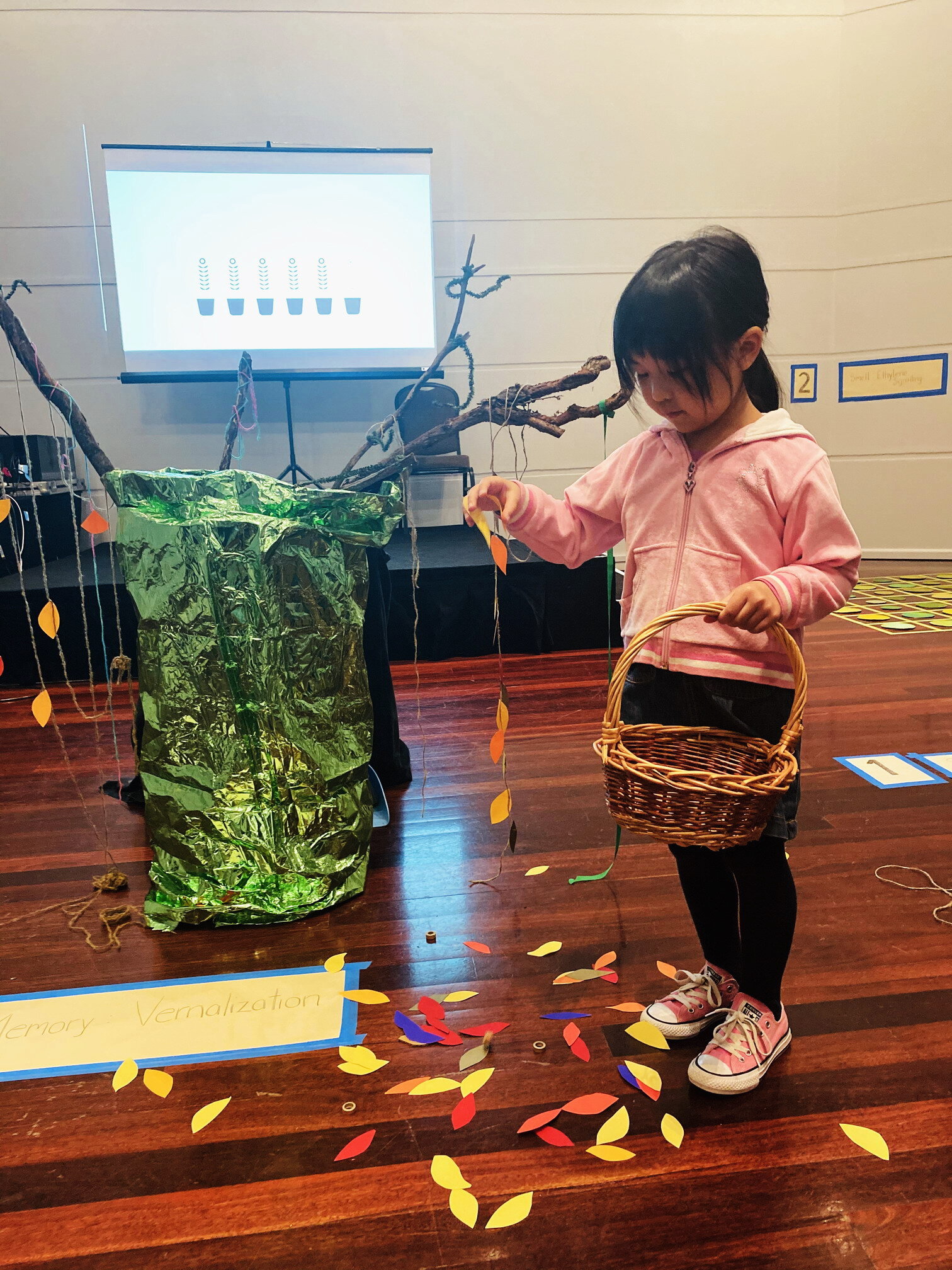Sessile Conversations: music centered installation around the senses of plants
Interactive music centered installation
Sessile Conversations grew out of research into the sensory corollaries of human to plant – what is seeing like for plant compared to what is seeing like for humans?
Five different senses were explored, with different stations around the room for each sense. At each station there was an interactive craft activity to enable a kineasthetic approach to learning about the sense that was combined with newly composed music for guitar duets featuring processed classical guitar.
1. Phototropism: Sight
2. Ethylene Signalling: Smell
3. Thigmomorphogenisis: Touch
4. Circumnutation: Movement
5. Vernalization: Memory
Sessile Conversations was presented through the generosity of the Clocktower residency programs, in collaboration with Visual Designer Rebecca Marshall and Graphic Artist Kyle Falzon.
Phototropism/Sight:
Sight in plants allows them to perceive different qualities of light – through the sensing of how light is different at dawn through the day to dusk - plants can both know when to activate and absorb light and also follow the path of the sun. For this track an animation showing a plant following the path of the sun was combined with an installation combining rocks, strings and cardboard.
The Music follows the principle of two interacting forces coming together to cause movement – the response of the plant comes from the stem for the movement, even though the sensory apparatus that is aware of the light changes is in the tip. The stem and the tip are represented by high and low tones moving towards each other and interacting as both are needed in Phototropism.
Ethylene Signalling/Smell:
Fruit on plants ripens at the same time, and this is done through chemical signalling – a kind of pheromone equivalent in the plant world, the smell of ripening fruit causes the other fruit to ripen so that the plant can best take advantage of the birds and animals that come to feast and spread their seed. The installation for this track was a grid of painted cardboard circles to represent fruit, and the activity is for one coloured circle to change and cause all the others to change also.
The music features an echo principle, phrases are repeated but inverted, the low parts translated into the high parts on the repeat in a slow, graceful dialogue.
Listen to Ethylene Signalling: https://soundcloud.com/meredithconnie/02-ethylene-signalling
Thigmomorphogenesis/Touch:
Plants respond to objects in their path by growing around them, and respond to repeated touch of wind or other elements – or the touch of humans – by avoiding and growing away from that touch. This activity featured rolls of paper with objects and obstacles scattered over them, and participants were invited to become the growing plant tracing their path around the objects using crayons.
The music for this track has the two guitar parts paralleling each other but bouncing off of each other to push one part slightly out of place, only to return to being synchronized to being bounced out of place again in an eternal dance between action and reaction. It is quite strong as elemental forces that act on plants can distort and shape them to an enormous degree.
Listen to Thigmomorphogenesis: https://soundcloud.com/meredithconnie/03-thigmomorphogenisis
Circumnutation/Movement:
Every tip of every plant conducts a dance over a 24 hour period where they move in a pattern described by their genetic imprint – the dance of the tip of the shoot is different in different species. Even in space plants perform the same dance when removed from gravity. We took the most small and minute movement of the plant tip and enlarged it onto the floor, becoming the tip of the plant in dance-like pattern that could be traced by walking in its steps – this particular pattern of a cabbage plant was mapped by Charles Darwin.
The music for this track features delicate harmonics in a conversational interaction, and features four different pitch centres, where the pitch areas represent a geography of movement as the tip moves into different areas of space.
Listen to Circumnutation: https://soundcloud.com/meredithconnie/04-circumnutation
Vernalization/Memory:
A plant not only has to sense the temperature to know what seasonal cycle it is in, it also has to remember and chart the temperature of the preceding days, and combine that information with the length of the light to know when it is time to shed leaves for Autumn. That process of remembering is known as Vernalization. For this installation there was an animation as well as leaves and objects that could be scattered with the animation as the leaves fell in an ever-changing combination.
The music for this track is a slow build with a few simple elements, and repeated or varied versions of that element were added over time to build to a climax to reflect the cumulative data that leads to the shedding of leaves. All of the melodic patterns in the music fall downwards, combined with a relentless, minimalistic drive.




